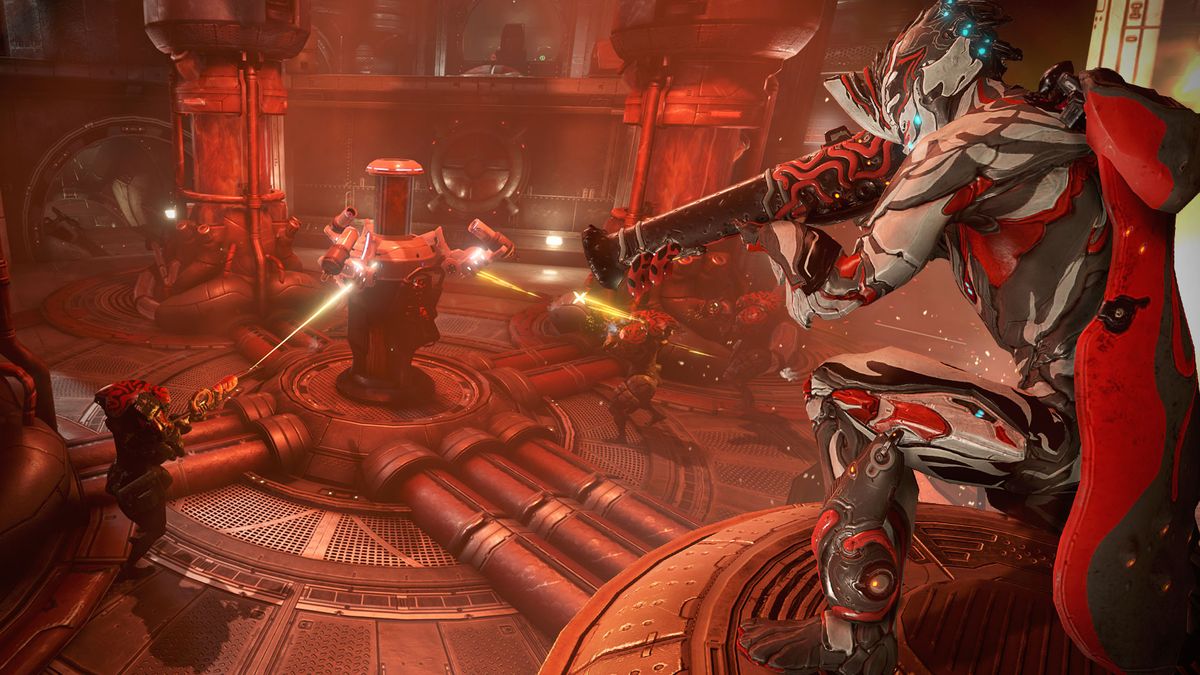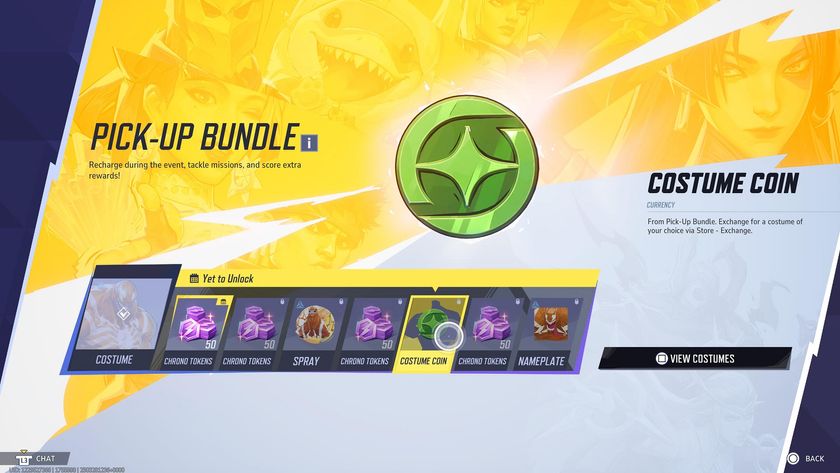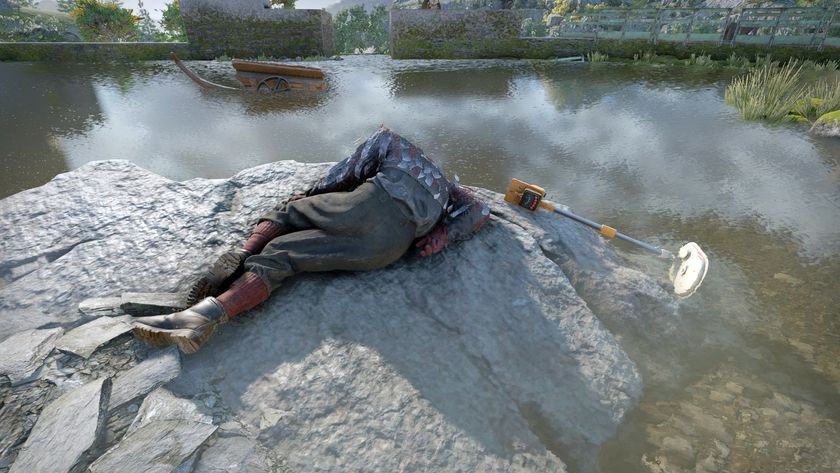Warframe Beginner's Guide: Select your starting Warframe, explore the map, and find the best items fast
How to get started in the free-to-play shooter, and where to go to get the most useful items

Warframe can be daunting. The free-to-play shooter has blistering action that asks you to react with split second timing. Its arsenal of robot ninjas and cockamamie weapons gets bigger, and more esoteric, every day. Even the most experienced players can’t keep everything straight all the time.
But what about the newcomers? Warframe offers some okay tutorials breaking down the game’s major systems, but there’s still a lot of ground that goes uncovered, so if you haven’t been playing the game for years already it can be a lot to take in. More than that, there are some important points that Warframe just doesn’t address.
Which is where this starter guide comes in. It’s meant to show new players how best to spend their first confusing, crucial hours in the game - from selecting your first titular Warframe, to where you should spend your time, and the most important items and skills to acquire early. Let’s take a look.
Select a Warframe

Warframe begins with what feels like an incredibly important choice. During the tutorial you’ll be asked which of three titular Warframes you’d like to pilot: Excalibur, Mag, or Volt. It’s not terribly hard to acquire and craft more, however it will take upwards of three real-time days to get your second Warframe (unless you spend real-world cash), so you’ll be stuck with your initial choice for a while.
Our short answer is to just pick Excalibur. The high-damage, energy sword wielding Warframe is good in just about every level of activity, from the opening tutorial to endgame content. He’s pretty much been that way from the beginning.
The longer answer is that Mag is a pseudo-support that grants shields to allies while manipulating crowds of enemies. Volt is a wide-area damage dealer with more general utility, which can provide speed and damage boosts to allies while defending choke points with energy walls.
The other big difference is that, depending on loot rotations, you can farm and/or trade for better versions of Volt and Mag. Acquiring these “Prime” variants of equipment is a big part of Warframe’s mid-game - there’s an Excalibur Prime, too, but it was exclusive to early Warframe founders.
There’s also a third version of Excalibur you get for free as part of the game’s story. However that point takes dozens of difficult hours to reach, and by the time you get tired of plain old Excalibur you might be ready to skip Mag and Volt’s normal versions and go straight for the Primes. At the end of the day, though, you should pick whichever ‘frame sounds the most fun.
Quick Tip: Use your initial stipend of Platinum, Warframe’s real-money currency, to buy more inventory slots for weapons and ‘frames. Nearly everything else can be acquired without Platinum, but these cannot.
Ride the Rails: Where to Go and What to Do

Missions in Warframe typically play out over a map of its fictionalized solar system. You start on Mercury and make your way outwards by beating mini-bosses in special arenas called Junctions - so completing the Venus Junction unlocks Venus, the Earth Junction unlocks Earth, and so on. More than that, Junctions unlock vital gameplay systems like story quests, machinery for your ship, and new gear.
Completing all of these Junctions should absolutely be your first priority after the tutorial, as it gives Warframe a general sense of direction the game otherwise lacks. You’ll also want many of those unlocks as soon as possible, not to mention unlocking every level on a planet lets you use resource extractors (which passively soak up crafting materials in real-time) and access Alert Missions. These time-limited events offer incredibly useful rewards, and although you can beg high-level players to “taxi” you to Alerts in the game’s Recruiting channel, it’s just not very reliable.
Filling out Junction objectives also doubles as a pseudo-tutorial. You’ll want to practice doing certain mission types, applying mods, using Void Relics, and so on. Even if the Junctions don’t always teach you what those terms mean, they will give you a sense of what to look up online or ask about in chat. Once you start to unlock them you can also spice up this process by completing quests - accessible from the Codex terminal on your ship - that unlock even more goodies.
Quick Tip: Do the primary story missions - these are The Second Dream, The War Within, and The Sacrifice. They unlock game-changing new systems you’ll never see otherwise... and they’re pretty good yarns, too!
More than Meets the Eye

Warframe is an extremely complicated game. That’s not a bad thing by itself, however it is a problem when the game straight-up doesn’t include important information. That practice applies to the vast majority of playable Warframes in the game. The game only provides basic summaries of abilities with up to dozens of mathematical interactions and combinations.
Frost, for instance, is an incredibly useful defensive ‘frame that can summon protective domes that block enemy fire. But did you know the bubbles’ hit points are multiplied by Frost’s own armor value? You wouldn’t know it just from the in-game description. Nor would you know Corrosive damage can permanently reduce enemy armor while Slash attacks cause enemies to bleed out. The list goes on.
The good news is that there’s a solution. The Warframe Wiki is an absolutely vital treasure trove of minute details that even the most advanced players need to rely on from time to time. That’s doubly true since the game can change dramatically - patching entire systems in and out overnight. Even if you think you understand a certain weapon or Warframe, it’s never a bad idea to check the wiki to see if there’s some major detail the game doesn’t even hint at.
Quick Tip: Completing certain Junctions also unlocks the Warframe Chroma: an extremely strong tank with major late-game uses. He’s absolutely worth crafting as soon as you can.
The Life-Changing Items

Warframe is, at the end of the day, a loot game, so eventually you’ll probably want to collect everything. Not all items are created equal, though, as some Warframes, weapons, mods, and items will completely overhaul your in-game life for the better - while others are just really convenient. Here are some of the essentials:
Rhino is an absolute godsend to new players: an early-game Warframe with tremendous damage output and survivability. Like Excalibur, he’s good at nearly any stage of the game, though unlike Excalibur he’s nigh indestructible with his Iron Skin ability. If you just want to waltz through levels and “get to the good stuff,” then get a Rhino. His crafting blueprints drop from the Jackal boss on Fossa, Venus.
Extractors are very, very good. That’s because farming resources in Warframe is a huge choke point to gaining new and better equipment. Extractors take out some of the sting by passively drilling for them. Said resources are randomly chosen based on the planet you select (you can see which planets store which resources in the circle on the bottom-right of every planet’s map) and rare ones only drop once in a blue moon, but you can never have too much of anything in Warframe. Extractor blueprints are found on the Market terminal in your ship.
Serration, Point Blank, Hornet Strike, and Pressure Point are the number one damage mods for every subclass of weapon in the game. As such they’re also some of the most important mods to acquire and level up fast, though thankfully they’re fairly common drops. Just make sure you always keep at least one of each - preferably upgraded to max as soon as you can.
Redirection, Vitality, and Vigor are to Warframe longevity as the previous four mods are to damage - they keep you alive. Redirection boosts shields while Vitality increases health. Both are extremely common drops and should be leveled up quickly. Vigor boosts both types of hit points, but is mostly acquired from the fairly difficult Nightmare missions. Invincibility Warframes like Valkyr will help you farm for it.
Bullet jumping isn’t actually an item, it’s just a critical skill to develop early on. The universal movement combo allows you to blast through levels at high speed, which in turn lets you keep up with squadmates who will be doing the same thing. You execute said combo by sprinting, pressing crouch to begin a slide, double jumping forward, and aiming in mid-air. Rinse and repeat. It might take a while to master as Warframe moves at a breakneck pace, but even getting the basics down makes things much quicker.
Quick Tip: Join a big clan. You can always leave later, if you’d rather play with a specific group, but clans offer invaluable resources to new players. They can taxi you to Alert Missions for special rewards, offer tips and advice, and perhaps most importantly there are some weapons, Warframes, and other types of gear you simply cannot get without a clan’s cooperative research labs. Joining an existing group will save you a lot of trouble.
Still unsure about jumping in to Warframe? Then check out the reasons Warframe's tough to start, but that's also why it's still so fun.
Sign up to the 12DOVE Newsletter
Weekly digests, tales from the communities you love, and more
Steven is currently the Senior Managing Editor at Fanbyte, but was formerly a freelance journalist with bylines at Ars Technica, PC Gamer, Dorkly, Waypoint, Rock Paper Shotgun, and GamesRadar.












